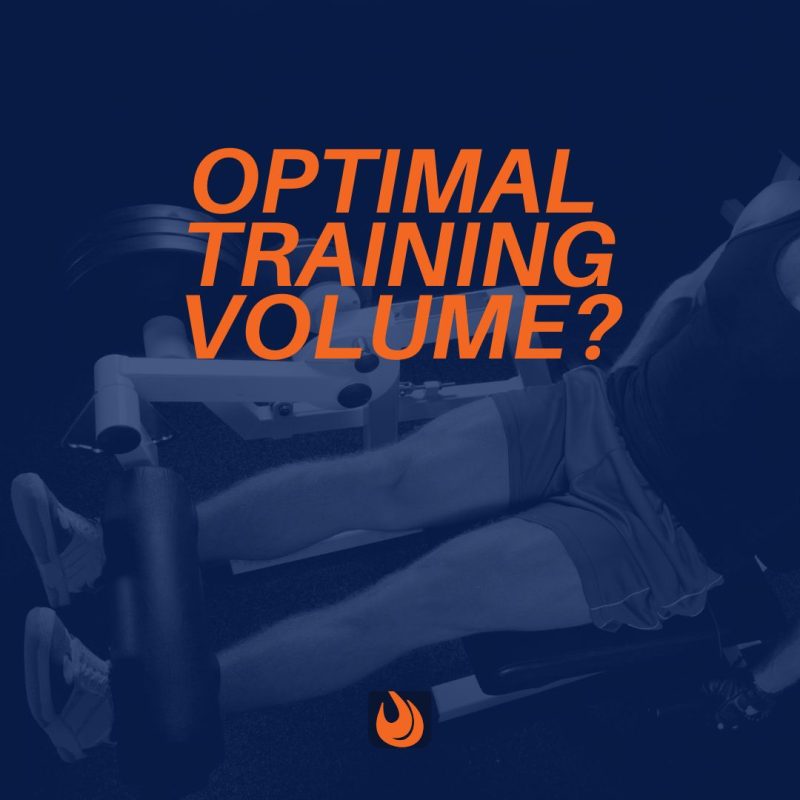
Volume, frequency, and load all factor into a successful resistance training program. Many personal training clients ask how often they should work out, how intensely, balancing cardio and weight training…but so much more comes into play. The gaining of lean muscle mass, or hypertrophy, does not proceed along a “cookie-cutter” format for all of our clients. Similarly, no one-size-fits-all recommendation exists for an ideal number of sets to execute, regardless of the workout regimen. Below we will discuss the most recent research on the impact of training volume on muscle growth to better inform your programming options for your personal training clients.
What’s the Lifter’s Level of Experience?
Muscle growth requires the interplay of many factors, according to Dr. Brad Schoenfeld, head of the Human Performance Laboratory at Lehman College in the Bronx. Genetics serves a key role, as well as the specific type of training, years of experience, and the individual’s unique response to the workout and overload.
A dedicated novice in the weight room may see muscle mass gains of 2-3 pounds in the first month. However, the seasoned athlete lifting for 20 years may only add 2 pounds of muscle each year. An average lifter who falls in between these two extremes can perhaps add 1-2 pounds a month.
Current analytical research suggests that different population groups show distinctive muscular adaptations. For novice and intermediate male trainees, low-frequency volume does not lead to strength gains nearly as much when compared with medium or high weekly strength training. For individuals well-versed and experienced in strength training, the use of either medium or high-frequency training programs may be sufficient to produce strength gains.
How Much Training Volume Is Too Much?
Trainers sometimes may need to temper some clients’ enthusiasm. “If you train too heavy all the time, it can harm your joints and other soft tissue structures,” says Schoenfeld. This can lead to injury and overtraining, both of which negatively affect one’s ability to build muscle.
Recently, a research article purported that the training paradigm demonstrating the highest possible hypertrophy results came in at 50 sets per muscle group. That’s sets, not reps! Dr. Mike Israetel, a sports physiologist, along with sports scientist Dr. Milo Wolf, published the results of their study in the journal Medicine & Science in Sports and Exercise. Focusing on quadriceps training accomplished largely with squats, leg presses, and leg extensions, the study compared three training volumes:
- Group 1 (Low Volume): 22 sets of quad training per week, split evenly over 2 workouts
- Group 2 (Medium Volume): 22 sets of quad training, adding 4 sets of additional weekly training every 2 weeks, culminating in 42 sets per week (or an average of 32 sets per week for the 12-week study)
- Group 3 (High Volume): 22 sets of quad training, adding 6 sets of additional weekly training every 2 weeks, culminating in 52 sets per week (or an average of 38 sets per week for the 12-week study)
The results suggest that progressively adding four to six sets per week every two weeks elicited greater lower-limb strength in resistance-trained individuals over the 12-week duration of the study. While acknowledging a potentially small benefit for higher volume conditions, the limited and questionable accuracy of the findings indicates the need for more research.
Not every athlete can add more volume to his regular training, especially to this extent. The time commitment involved in putting such a program into motion for every single body part would undoubtedly tax the average individual. Doing so would also likely mean sacrificing adequate recovery, thereby increasing the risk of injury. Furthermore, this short-term study cannot speak to how this approach would affect one after a year of this high-volume training. One may focus on gradually increasing overall weekly training volume, making sure to work close to or at failure by the completion of all sets.
Adding Volume Judiciously
The findings of yet another well-cited study, results of which appeared in the Journal of Sports Science, revealed that 10 sets per muscle group per week elicited greater hypertrophy than any lesser number of sets. Scientists suggested athletes use this as a starting point, increasing weekly sets gradually as strength gains manifest.
Current evidence indicates that training twice a week promotes superior hypertrophic outcomes versus hitting the gym only once a week. To determine whether training a muscle group three times per week yields superior outcomes, more research and testing will prove useful.
Accounting For Frequency and Age
Following a systematic search of 25 studies, scientists noted no significant difference in muscular hypertrophy between higher and lower frequency on a volume-equated basis. Once a coach and client decide upon a certain training volume, the client can choose his weekly training frequency per muscle group based on preference/schedules/time allowances.
When considering results, we might also choose to look at more specific analyses. It seems that higher training frequencies result in greater gains in muscular strength on multi-joint exercises in the upper body. When considering the differences between age demographics, young individuals seem to respond more positively to greater training frequencies than their older adult athletic counterparts.
Programs Can and Should Vary
Many bodybuilders find that having some lighter load workouts—in the 15 to 20 rep range—also delivers positive hypertrophy gains. Building a week of this form of training into one’s workout program can help alleviate overuse injuries, while also fostering a fuller recovery.
Brad Schoenfeld, a certified personal trainer, has risen as an expert in the areas of fitness and sports nutrition. He owns/operates the highly-touted Personal Training Center for Women in Scarsdale, N.Y. Schoenfeld believes “there is some evidence that light loads target type I (slow-twitch) muscle fibers and that heavier loads target type II (fast-twitch)”. This would indicate a benefit to combining repetition ranges to optimize muscle response while maximizing growth.
Mixing It Up
Trainers can reassure their more skeptical lifters that many training paradigms can have places within their workouts. “Research has shown that on average, 10 sets per muscle group per week seems to be the lower threshold at which muscle growth is maximized,” says Schoenfeld. However, consider shaking things up by occasionally having a microcycle of working at 3-5 reps (near maximal loads), followed by a return to the original plan. Just as we work one muscle group several different ways to keep it growing and able to respond to new demands, training programs derive this same benefit by trying various set/rep ranges.
References
www.menshealth.com/fitness/a19544988/workout-mistakes-for-muscle-growth/#
journals.lww.com/acsm-msse/abstract/9900/effects_of_different_weekly_set_progressions_on.380.aspx
pubmed.ncbi.nlm.nih.gov/30076500/
pubmed.ncbi.nlm.nih.gov/28755103/
pubmed.ncbi.nlm.nih.gov/29470825/
pubmed.ncbi.nlm.nih.gov/30558493/
pubmed.ncbi.nlm.nih.gov/27102172/
pubmed.ncbi.nlm.nih.gov/27433992/
www.menshealth.com/uk/building-muscle/a45952261/how-many-sets-you-need-to-do-to-build-muscle/
journals.lww.com/acsm-msse/abstract/2024/03000/effects_of_different_weekly_set_progressions_on.18.aspx
www.researchgate.net/publication/311132772_Differential_Effects_of_Heavy_Versus_Moderate_Loads_on_Measures_of_Strength_and_Hypertrophy_in_Resistance-Trained_Men







